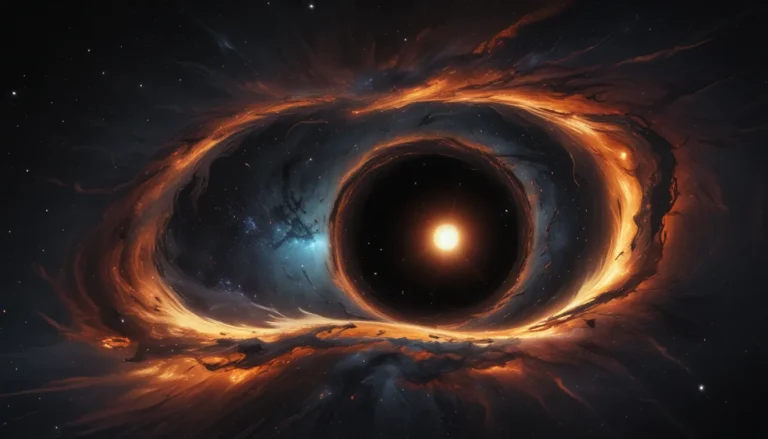The pictures we use in our articles might not show exactly what the words say. We choose these pictures to make you interested in reading more. The pictures work together with the words but don’t take their place. The words still tell you the important facts.
The Universe, with its vast expanse and endless mysteries, never fails to capture our imagination. Among the countless phenomena that intrigue scientists and enthusiasts alike, cosmic rays stand out as a particularly enigmatic subject. These high-energy particles from outer space constantly bombard our planet, offering valuable insights into the workings of the cosmos.
Key Takeaways
- Cosmic rays are high-energy particles from space, originating from sources like supernovae and black holes.
- They play a crucial role in understanding the universe, impacting Earth's atmosphere and even influencing the formation of clouds.
Cosmic Rays: High-Energy Particles from Space
Cosmic rays are not rays at all but a shower of atomic nuclei and subatomic particles that travel at incredible speeds from outside our solar system. These particles, including protons and electrons, carry immense amounts of energy, making them a significant force in the cosmos.
Origins of Cosmic Rays
These high-energy particles come from various sources in the universe, such as supernovae, black holes, and other celestial events. Accelerated to near-light speeds by these phenomena, cosmic ray particles travel vast distances before reaching Earth's atmosphere.
Constant Bombardment
Contrary to their name, cosmic rays do not originate from a single source but permeate the entire universe, constantly bombarding Earth from all directions. These particles can traverse through objects with minimal interaction, including passing through our bodies.
Impact on Living Organisms
While cosmic rays are typically harmless due to their low interaction with matter, prolonged exposure to high levels of cosmic radiation can pose health risks to astronauts and airline crews. DNA damage and an increased risk of cancer are potential outcomes of extended exposure.
Essential Insights into the Universe
Studying cosmic rays provides scientists with invaluable information about the cosmos, offering insights into cosmic object compositions, the origins of high-energy phenomena, and even the nature of dark matter. This research is fundamental to expanding our understanding of the universe.
Stunning Light Displays
When cosmic rays collide with Earth's atmosphere, they interact with atoms and molecules, releasing bursts of energy in the form of light. These cosmic ray air showers can lead to breathtaking displays, such as the magnificent auroras seen near the poles.
Interference with Electronic Devices
The high-energy particles of cosmic rays can disrupt and interfere with sensitive electronic equipment, causing errors in systems like satellites, computers, and avionics in aircraft at higher altitudes. Shielding and error correction mechanisms are crucial in mitigating these impacts.
Energies Beyond Human Reach
Cosmic rays have been observed with energies exceeding 10^20 electron volts, far surpassing those achievable by man-made particle accelerators. These extremely high-energy particles remain a captivating mystery for scientists, challenging our understanding of the universe.
Creation of Secondary Particles
When cosmic rays interact with molecules in Earth's atmosphere, they can produce a cascade of secondary particles, including muons and pions. Scientists study these secondary particles to unravel the properties and behavior of cosmic rays, offering unique insights into their nature.
Exploration of Ancient Pyramids
Scientists have utilized cosmic rays to create detailed images of the interior structures of ancient pyramids. By measuring the muons generated by cosmic ray showers, researchers can detect voids and hidden chambers within these historical monuments without causing any damage.
Role in Cloud Formation
Cosmic rays are believed to influence cloud formation in Earth's atmosphere through ionization processes. The high-energy particles can ionize molecules in the atmosphere, providing nucleation sites for cloud droplets, potentially impacting the planet's climate.
Conclusion: Journey into the Cosmos
Cosmic rays remain a captivating and mysterious aspect of the universe, offering invaluable insights into its workings. Understanding these high-energy particles is essential for numerous scientific endeavors, including space exploration, particle physics, and climate studies. As technology advances, we move closer to uncovering the secrets behind cosmic rays, unveiling more mysteries of the cosmos.
FAQs
-
What are cosmic rays?
Cosmic rays are high-energy charged particles originating from outer space, such as protons and atomic nuclei. -
Where do cosmic rays come from?
Cosmic rays can originate from various sources like supernovae, black holes, active galactic nuclei, and even the Sun. -
How do cosmic rays reach Earth?
Traveling at near-light speeds, cosmic rays reach Earth's atmosphere through the magnetic fields and structures in the universe. -
Can cosmic rays affect electronic devices?
Cosmic rays can cause glitches or damages to electronic devices, particularly in high-altitude or space missions. Shielding and error correction mechanisms help mitigate their impact. -
Are cosmic rays harmful to living organisms?
While cosmic rays can pose health risks with prolonged exposure, Earth's atmosphere provides substantial protection from the majority of cosmic radiation. -
Can cosmic rays impact the Earth's climate?
Cosmic rays may influence cloud formation and potentially play a role in Earth's climate. Ongoing research aims to understand the exact relationship between cosmic rays and climate. -
Can we harness cosmic rays as an energy source?
Although cosmic rays contain vast amounts of energy, harnessing them for practical energy purposes presents significant challenges due to the complexities involved. -
Are cosmic rays related to genetic mutations?
High-energy cosmic rays can cause DNA damage and potential genetic mutations. However, the risks to humans on Earth are minimal due to atmospheric and magnetic protections. -
How do scientists study cosmic rays?
Scientists employ various methods like ground-based telescopes, space detectors, and high-altitude balloons to study the properties and origins of cosmic rays. -
Can cosmic rays benefit humanity?
Cosmic rays have advanced our understanding of particle physics and the universe's structure, contributing to technologies like radiation detection and imaging systems. -
Are cosmic rays and gamma-ray bursts connected?
Gamma-ray bursts, powerful bursts of gamma radiation, may be associated with cosmic rays. Research continues to explore the relationship between these phenomena.
Join us in the exploration of cosmic rays, unlocking the universe's profound mysteries and expanding our understanding of its captivating secrets. Trust in our commitment to delivering engaging and accurate content as we delve into the awe-inspiring realm of cosmic astrophysics.






